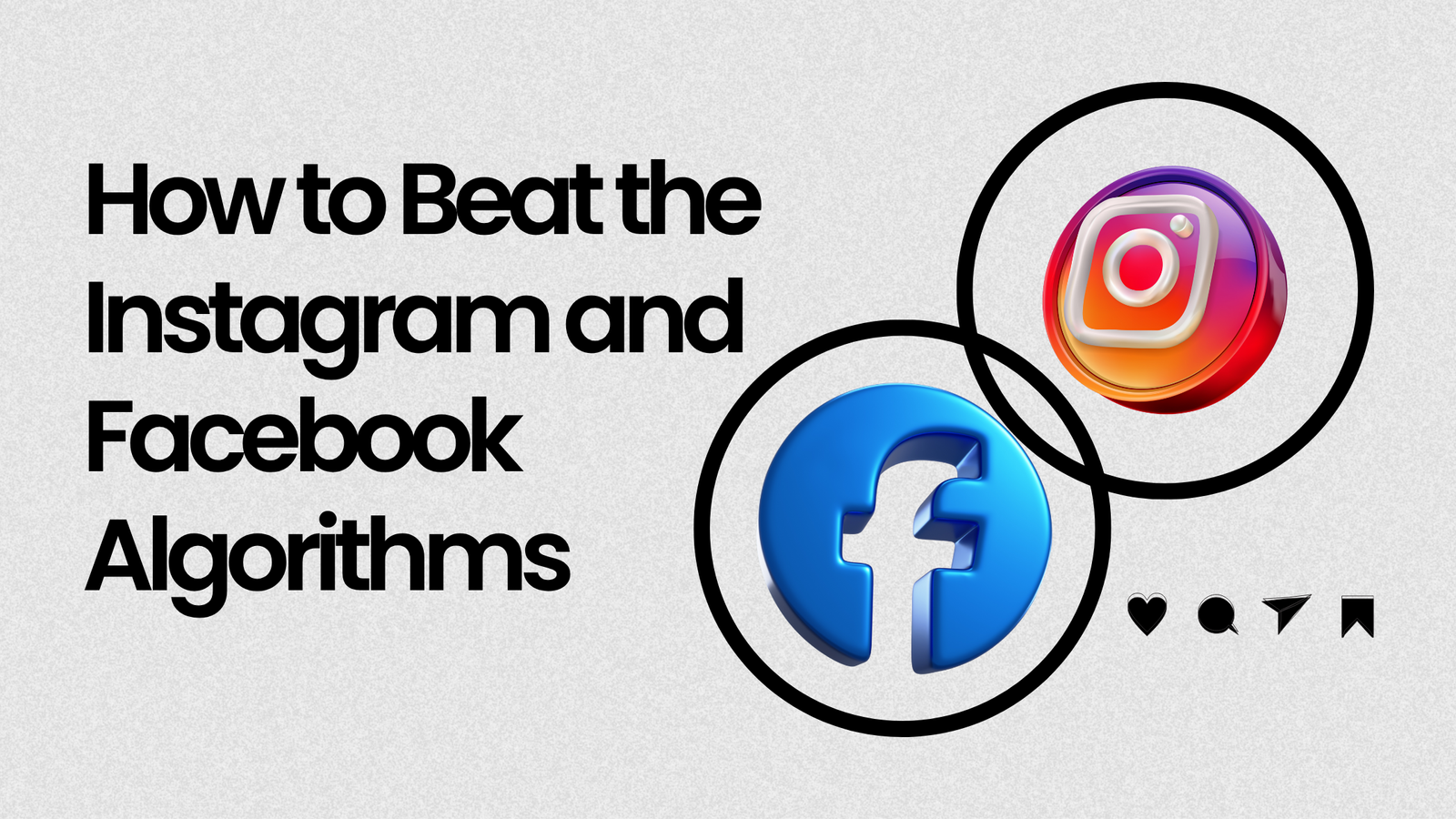Introduction
Social media platforms no longer run on simple timelines. In 2025, Instagram and Facebook rely on complex algorithms to decide what content people see. These algorithms favor posts that keep users engaged, making it harder for brands to cut through the noise.
For marketers, this isn’t about gaming the system. It’s about creating strategies that work with the algorithm, not against it. In this guide, we’ll break down how Instagram and Facebook algorithms function, highlight their differences, and show practical steps to succeed. We’ll also connect these ideas with broader trends, including Google’s Helpful Content System, to prove that authentic, user-first content always wins.
The Evolution of Social Media Algorithms
Back in the early days, both Facebook and Instagram ranked posts by time. Whoever posted most recently showed up first. Over time, as feeds grew crowded, both platforms shifted toward relevance.
- Facebook in 2025: Facebook now prioritizes posts that spark conversations. Group discussions, comments, and shares outweigh likes. The goal is to keep people interacting with friends and communities.
- Instagram in 2025: Instagram puts visual storytelling at the core. Reels dominate reach, while Stories and carousels hold attention. The algorithm measures how much time people spend with content, not just whether they click “like.”
The takeaway is clear: engagement quality matters more than volume.
Instagram vs. Facebook: How the Algorithms Differ
Although Meta owns both platforms, Instagram and Facebook serve different purposes:
- Instagram: Visual-first. The Explore tab, Reels, and personalized feeds push content based on interests and behavior.
- Facebook: Community-first. Groups and discussions dominate. Posts that spark back-and-forth conversations rise higher.
For example, a polished Reel may gain traction on Instagram. On Facebook, the same content works only if it encourages comments and shares. Understanding these differences helps marketers tailor strategies instead of treating platforms the same.
User Behavior: The Core Ranking Signal
Both Instagram and Facebook rely on user behavior to rank posts. Algorithms track:
- How long people watch or view a post
- Whether users save, share, or comment
- If someone engages with the same account multiple times
- Private shares and direct interactions
These behaviors act like votes of relevance. The more people engage deeply, the more likely the content spreads.
This mirrors Google’s approach with its Helpful Content System, which rewards pages designed for people, not search bots.
🔗 Reference: Google Ranking Systems – Helpful Content
How to Beat the Instagram Algorithm in 2025
Instagram favors authenticity and strong engagement signals. To stand out:
- Invest in Reels: Short videos drive the highest reach. The first three seconds are critical for attention.
- Use Stories Creatively: Polls, stickers, and quizzes create micro-interactions that push content higher.
- Design Carousels: Swipeable content keeps users engaged longer, boosting ranking signals.
- Encourage Saves and Shares: Content people want to revisit or pass along signals long-term value.
Consistency matters too. Posting regularly teaches the algorithm that your account delivers ongoing value.
How to Beat the Facebook Algorithm in 2025
On Facebook, conversations and communities lead the way. To win:
- Leverage Groups: Posting valuable content inside active groups expands reach and relevance.
- Start Discussions: Ask questions, share insights, or spark debates. Comments outweigh passive engagement.
- Post Native Video: Facebook favors video uploaded directly rather than links to other platforms.
- Mix Organic and Paid: Organic reach is limited. Paid campaigns, when combined with engaging organic content, drive visibility.
Unlike Instagram, Facebook thrives on dialogue. Content should feel like an invitation to connect, not a one-way broadcast.
Search Engine Optimization Meets Social Algorithms
What does Search Engine Optimization have to do with social media? More than you think. Just as Google ranks content based on usefulness, social platforms evaluate engagement. Keywords, hashtags, and captions help algorithms understand context, much like meta tags help search engines.
An SEO-focused mindset makes social posts more discoverable. When combined with user-first content, this creates a powerful cycle where posts rank well on search engines and perform on social platforms.
The Role of a Digital Marketing Agency
Adapting to algorithm changes can be overwhelming. This is where a Digital Marketing Agency becomes invaluable. Agencies track updates, test strategies, and provide insights that align with platform rules. They also integrate campaigns across channels, combining Social Media Marketing with SEO to maximize results.
Instead of chasing quick wins, agencies focus on sustainable growth. This ensures that content performs consistently, regardless of how algorithms evolve.
Industry Trends to Watch in 2025
The landscape is evolving fast. A few key trends are shaping strategies this year:
- AI-driven recommendations: Both platforms use AI to personalize feeds, making niche content more discoverable.
- Creator-led growth: Meta favors authentic creators over polished brand accounts. Partnerships with influencers are critical.
- Cross-platform integration: Facebook and Instagram are becoming more connected. Reels now appear on both platforms.
- Authenticity over perfection: Audiences value raw, human content more than highly produced posts.
These align closely with broader digital marketing trends, where authenticity and value take center stage.
🔗 Reference: Google Search Central Blog
Conclusion: Adapt Early, Stay Ahead
Beating the Instagram and Facebook algorithms in 2025 doesn’t mean gaming the system. It means aligning with it. Both platforms reward content that is engaging, authentic, and designed for people. Google’s updates tell the same story: helpful content always wins.
Businesses that combine Social Media Marketing with Search Engine Optimization strategies gain an edge. Partnering with a trusted Digital Marketing Agency ensures those strategies are future-proof.
The algorithms will continue to evolve. The businesses that adapt early—by focusing on people, not just platforms—will always stay ahead.


